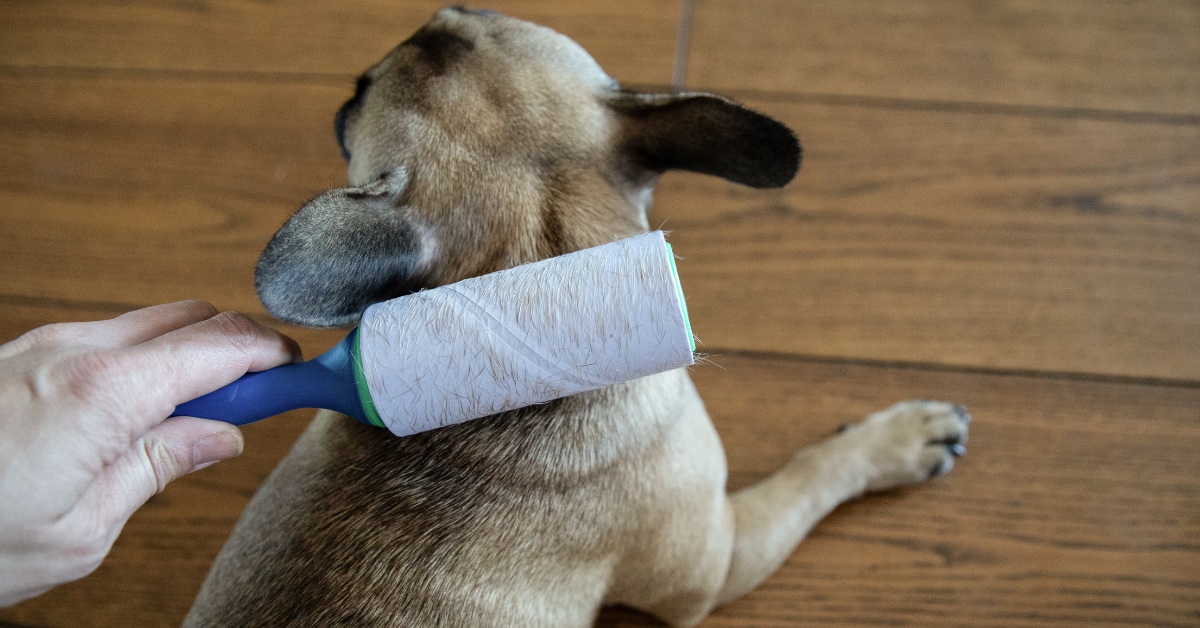
All dogs shed. But some dog breeds take the act of shedding to the extreme. There's even a term for it: coat blowing. But just because your dog is a shedder doesn't mean there's nothing you can do about it. There are ways to manage excessive dog shedding.
Note we said manage, not eliminate. Dogs need to shed at least once a year to make room for new fur and hair growth.
Here's everything you need to know about excessive shedding in dogs and our top tips for how to manage it.
The primary drivers of excessive dog shedding are your dog's breed and the change of seasons.
There are some skin health problems that can cause shedding as well. Take your dog to the vet if you notice he has bald patches or irritated-looking skin. These may be symptoms of a more serious condition.But back to the "normal" causes of excessive dog shedding.
The main purpose of your dog's fur (or coat) is to regulate his temperature. (Other functions include protecting his skin from the sun and preventing injuries.)
Many dog breeds have two layers to their coat: a thick undercoat of fur and a looser outer coat of hair. It's that bottom layer that's responsible for excessive shedding in dogs.
Here's how it works: In the winter, that undercoat needs to be thick and warm. But in the summer, a thick undercoat would cause your dog to overheat. So, it needs to be replaced by a lighter, thinner undercoat.
As a result, in the spring, the thick winter coat is released to make room for the thinner undercoat. Then in the fall, the thin undercoat is shed to make way for the incoming thick undercoat. This is also why the spring coat blowing season is usually worse than in the fall.
Oh, and that loose outer coat? It sheds too, though rarely in large amounts.
Artificial light and heating: Dogs that spend most of their time indoors are exposed regularly to artificial light and central heating and air. This can confuse your dog's internal clock and result in year-round shedding.
Climate Change: Unseasonal hot and cold spells can also trigger your dog's shedding cycle. As global climate continues to shift and we see more unexpected stretches of cold in the summer and heat in the winter, you may notice your dog's shedding follows these weather patterns.
Poor quality food: The number one reason for non-seasonal excessive dog shedding is inadequate nutrition in your pup's food. (Dehydration can also lead to excessive shedding, so make sure your dog always has plenty of water on hand.)
Environmental stress: Ever noticed your dog starts shedding when you take him to the vet? That's environmental stress at work. Interruptions to their daily routine, loud noises, new people – all can make your dog anxious and trigger unexpected shedding.
To get at the undercoat, you'll want to use a slicker brush or a shedding-specific brush, which can get past the outer layer of hair and into the fur. Brushing in a circular motion or against the direction of growth can loosen the fur, allowing you to brush it out before your dog has a chance to shed it.
These shampoos also moisturize your dog's skin and fur, making it less likely he'll feel the need to scratch and loosen yet more fur.
(Find out more about the beneficial properties of omegas for dogs.)
You can also try supplements formulated to decrease dog shedding, like Shed-X, which promises to reduce extreme shedding in three to six weeks.
This can be as simple as finding a routine and sticking with it: walks at the same time every day, a single brand of food that you don't change, etc.
You might also want to add a calming supplement to his diet. Use it when you know you'll be taking your dog to the vet or someone new will be stopping by. Or, if your dog is always anxious, use a daily supplement, like Veterinary Formula Clinical Care's Pet Calm Plus.Product Picks